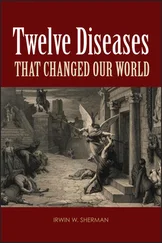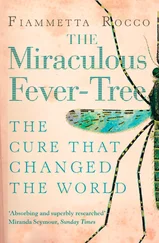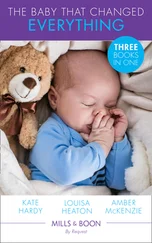Francis Anstie - Neuralgia and the Diseases that Resemble it
Здесь есть возможность читать онлайн «Francis Anstie - Neuralgia and the Diseases that Resemble it» — ознакомительный отрывок электронной книги совершенно бесплатно, а после прочтения отрывка купить полную версию. В некоторых случаях можно слушать аудио, скачать через торрент в формате fb2 и присутствует краткое содержание. Жанр: foreign_antique, foreign_prose, на английском языке. Описание произведения, (предисловие) а так же отзывы посетителей доступны на портале библиотеки ЛибКат.
- Название:Neuralgia and the Diseases that Resemble it
- Автор:
- Жанр:
- Год:неизвестен
- ISBN:нет данных
- Рейтинг книги:5 / 5. Голосов: 1
-
Избранное:Добавить в избранное
- Отзывы:
-
Ваша оценка:
- 100
- 1
- 2
- 3
- 4
- 5
Neuralgia and the Diseases that Resemble it: краткое содержание, описание и аннотация
Предлагаем к чтению аннотацию, описание, краткое содержание или предисловие (зависит от того, что написал сам автор книги «Neuralgia and the Diseases that Resemble it»). Если вы не нашли необходимую информацию о книге — напишите в комментариях, мы постараемся отыскать её.
Neuralgia and the Diseases that Resemble it — читать онлайн ознакомительный отрывок
Ниже представлен текст книги, разбитый по страницам. Система сохранения места последней прочитанной страницы, позволяет с удобством читать онлайн бесплатно книгу «Neuralgia and the Diseases that Resemble it», без необходимости каждый раз заново искать на чём Вы остановились. Поставьте закладку, и сможете в любой момент перейти на страницу, на которой закончили чтение.
Интервал:
Закладка:
Till lately I had not witnessed neuralgia as an after-consequence of tropical malaria-poisoning, although I have had many cases of other diseases, the relics of hot climates, under my care; but within the last year I have seen a case of extremely severe intercostal neuralgia of a perfectly periodic type occurring in a patient whose constitution had been thoroughly saturated with tropical marsh poison, and in whom the spleen was still much enlarged. The neuralgia was so terrible, and accompanied by such severe algide phenomena at the beginning of the attacks, and such a sense of throbbing as the pain developed, as to lead to serious suspicions of hepatic abscess, for the moment; but the course of events soon corrected this idea.
2. Neuralgias of the Period of Bodily Development. – By the "period of bodily development" is here understood the whole time from birth up to the twenty-fifth year, or there-abouts. This is the period during which the organs of vegetative and of the lower animal life are growing and consolidating. The central nervous system is more slow in reaching its fullest development, and the brain especially is many years later in acquiring its maximum of organic consistency and functional power.
That portion of the period of development which precedes puberty is comparatively free from neuralgic affections. At any rate, it is rare to meet in young children with well-defined unilateral neuralgia, except from some very special cause, such as the pressure of tumors, etc. Such neuralgias as do occur are commonly bilateral, and are connected either with the fifth cranial or the occipital nerves.
I must here mention an affection which was quite unknown to my experience, but was brought under my notice by the late Dr. Hillier, who kindly called my attention to the notes of two cases which were published in his interesting work on "Diseases of Children." The cases are those of two female children, aged nine and eleven respectively, in whom the principal symptom was violent and paroxysmal neuralgic headache. In both of these children the existence of cerebral tubercle was suspected, but this proved to be a mistake. In both there were intolerance of light, vomiting, tonic contraction of the muscles of the neck, and occasional double vision; but no impairment of intelligence, no amaurosis, and no paralysis or rigidity of the limbs. Each of these children died rather suddenly, after a violent paroxysm of pain. The main, indeed almost the only characteristic post-mortem change was a marked loss of consistence of tissue, in one case in the pons varolii, in the other in the pons, the medulla oblongata, and the cerebellum. These cases are of the highest possible interest, as are also several other instances of headache in children recorded by Dr. Hillier; notably one in which severe paroxysmal pains were attended with general impairment of brain-power, and, on the occurrence of death from exhaustion, the autopsy revealed an amount of degeneration in the cerebral arteries (as also in the general arterial system) which was astonishing, considering that the child was only ten and a half years old. This case, the full significance and interest of which will be better seen when we come to discuss the subject of pathology, is an example of physical changes in the nervous system, which are usually delayed to an advanced period of life, occurring altogether prematurely, and bringing with them a kind of neuralgic pain which is far more common in the decline than in morning of life. It will be seen presently that functional derangements may be in like manner precociously induced, with the parallel effect of inducing such pains as are ordinarily the product of a later epoch.
From the moment that puberty arrives all is changed in the status of the nervous system. In the stir and tumult which pervade the organism, and especially in the enormous diversion of its nutritive and formative energy to the evolution of the generative organs and the correlative sexual instincts, the delicate apparatus of the nervous system is apt to be overwhelmed, or left behind, in the race of development. Under these circumstances, the tendency to neuralgic affections rapidly increases. It will, however, be seen later that there is a great preponderance of particular varieties of the disease during this time. This period is above all things fruitful in trigeminal neuralgias, especially migraine.
There remains to be noticed the fact that sexual precocity sometimes very much anticipates the peculiar characteristics of the period after puberty. It is well known that in too many instances children are led, by the almost irresistible influence of bad example, to indulge in thoughts and practices which are thoroughly unchildish, and which exercise a powerfully disturbing influence upon the nervous system. A child before the age of puberty ought to be distinguished (if moderately healthy in other respects) by the absence of any tendency to dwell upon his own bodily health. Under the influence of precocious sexual irritation he becomes hypochondriacal and self-centred, and often suffers, not merely from fanciful fears and fanciful pains, but from actual neuralgia, which is sometimes severe. The attacks of migraine which are a frequent affection of delicate children whose puberty occurs at the normal time, are a much earlier torment with children who have early become addicted to bad practices. It is an anticipatory effect upon the constitution, strictly analogous to the production of the so-called "hysteria" in little girls under similar circumstances; and I suppose there is no physician who has not once or twice, at least, met with cases of the latter kind. The existence of any severe neuralgic affection in a young child, if it cannot be traced to tuburcle or other recognizable or organic brain-disease is prima-facie ground for suspicion of precocious sexual irritation; though, as Dr. Hillier's cases show, it is occasionally produced otherwise. Usually, there are other features which assist in the discovery of precocious sexualism, when it exists; there is a morbid tendency to solitary moping, and a moral change in which untruthfulness is conspicuous.
3. Neuralgias of the Middle Period of Life. – By this period is meant the time included between the twenty-fifth and about the fortieth or forty-fifth year. It is the time of life during which the individual is subjected to the most serious pressure from external influences. The men, if poor, are engaged in the absorbing struggle for existence, and for the maintenance of their families; or, if rich and idle, are immersed in dissipation, or haunted by the mental disgust which is generated by ennui . The women are going through the exhausting process of child-bearing, and supporting the numerous cares of a poor household, in some cases; or are devoured with anxiety for a certain position in fashionable society for themselves and their children; or again, they are idle and heart-weary, or condemned to an unnatural celibacy. Very often they are both idle and anxious.
It must not be supposed that there is a sharp line of demarcation between this period and the last; nevertheless, there are certain well-marked differences, both in their general tendencies, and as regards the local varieties which are commonest in each. We shall discuss the latter point farther on. At present, it is interesting to remark on the general freedom of the busy middle period of life from first attacks of neuralgia. A person who has had neuralgia previously may, and very likely will, during this epoch, be subject to recurrence of the old affection under stress of exhaustion of any kind. But it is very rare, in my experience, for busy house-mothers or fathers of families to get first attacks of neuralgia during this period of life. It is not the way in which a still vigorous man's nervous system breaks down, if it breaks down at all. Men frequently do break down, of course, at an age when their tissues generally are sound enough, and there is no reason, except on the side of their nervous system, why they should not remain in vigorous health for years. But it is greatly more common for the nervous collapse to take the form of insanity, or hypochondriasis, or paralysis, then that of neuralgia. If a man has escaped the latter disease during the period when the growth of his tissues was active, it is not very often that he falls a victim to it till he begins, physiologically speaking, to grow old.
Читать дальшеИнтервал:
Закладка:
Похожие книги на «Neuralgia and the Diseases that Resemble it»
Представляем Вашему вниманию похожие книги на «Neuralgia and the Diseases that Resemble it» списком для выбора. Мы отобрали схожую по названию и смыслу литературу в надежде предоставить читателям больше вариантов отыскать новые, интересные, ещё непрочитанные произведения.
Обсуждение, отзывы о книге «Neuralgia and the Diseases that Resemble it» и просто собственные мнения читателей. Оставьте ваши комментарии, напишите, что Вы думаете о произведении, его смысле или главных героях. Укажите что конкретно понравилось, а что нет, и почему Вы так считаете.












